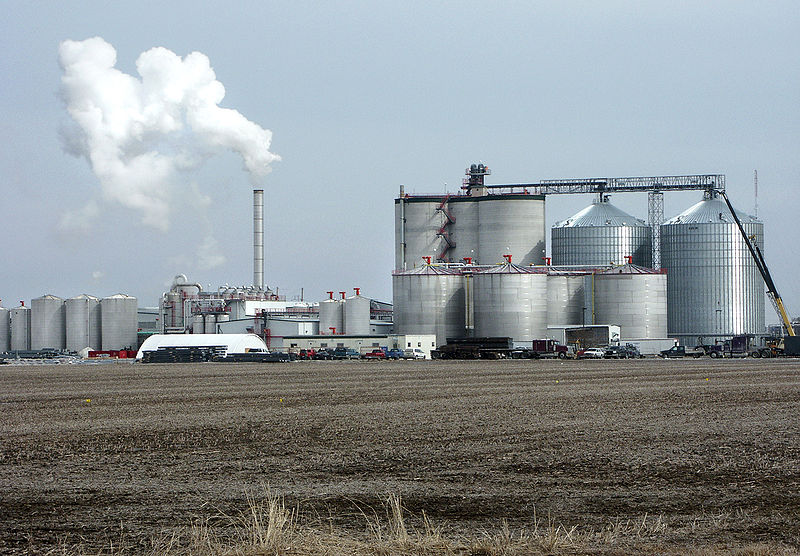
Under a new U.S. Renewable Fuels Standard (RFS) program, created by the Energy Policy Act in 2005, the US became the world’s largest producer of ethanol fuel. By 2007, a second government mandate, the Energy Independence and Security Act (EISA), was passed which expanded the RFS program requiring 36 billion gallons of renewable fuel be used by 2022.While corn ethanol is not directly outlined under these policies, 98% of the biofuels produced and blended into gasoline in the US originate from corn. This de facto directive for corn ethanol has had negative impacts on global food market prices. In 2012, we experienced the worst global drought of the last half-century. With the US being the world’s largest exporter of corn, and their mandated 40% allocation of its corn for ethanol use, the already pressured corn prices skyrocketed.
In the past decade, prices of oil and food have significantly risen to historic levels. Because of the inextricable link between food and energy markets, the grain market has experienced volatility over the past six years. As a commodity susceptible to weather, it is apparent how much recent climatic events have distorted global grain inventories. This consumption mandate has turned out to be the most significant driver of ethanol demand, corn demand and corn prices as we can see the global food crisis correspond with the US expansion of corn ethanol in 2007. Agricultural commodity prices broke record highs in ’07-’08, in ’10-’11, and again with the US drought in 2012.
The most ethically heated issue with the RFS mandate is that corn is diverted away from the global food supply and towards the US’ domestic energy chain. This policy has had harsh repercussions on developing countries, which spend a much greater portion of their income on food and energy than the developed world. While the world’s wealthy states can substitute higher priced foods from elsewhere, the world’s poor cannot. As a country that sends almost a billion dollars annually in food aid to help the developing world feed itself, why does the US divert food into their energy chain and consequently increase the global price of food? Is putting food in gas tanks an ethical energy policy, food policy, and foreign policy? Pitting food policies against energy policies is illogical and proving to be destructive, thereby increasing vulnerability to weather risks suggesting the EISA/RFS is an unpredictable law.
The RFS/EISA has become a source of debate amongst Americans: some want it repealed; others want it left untouched. There is, however, little discussion on what a repeal would look like apart from a complete shutting down of the policy. Phasing out the RFS year by year – effectually reversing the policy over time – could provide a concrete policy solution.
Powerful industries and advocates have been created under US ethanol production, and with the current rise in vocal opponents of the RFS, these industries and advocates sense a direct threat. Removing newly engrained policies is politically difficult. However, if the US were to phase out the EISA year by year, it would help mitigate the economic and political shock currently felt by corn farmers and ethanol reliant industries. Reducing US ethanol commitments over time, thus reducing the amount of corn in gasoline, would also help alleviate pressures on global food prices.
An emerging development in America’s energy landscape, that poses a legitimate challenge to the use of food in gas tanks, has been the discovery of significant new natural gas reserves. This immense supply has been identified and tapped, subsequently forcing US natural gas prices down to attractive levels relative to both oil prices and international natural gas spot rates. The security, predictability and location of this supply are by far superior to that of global oil.
Already there are industry efforts to convert engines to burn natural gas and establish infrastructure to distribute it. This will take time and investment but represent a kind of phase-in calendar that could offset the phase-out use of ethanol. Moreover, converting vehicles to natural gas would create jobs: drilling, distribution, infrastructure and conversion. It would not encroach on food supply, or on American foreign policy, other than to reduce a reliance on foreign oil.
While there are some environmental concerns, natural gas is the cleanest burning and most efficient of all hydrocarbons and offers an environmentally preferred alternative to higher carbon emitting gasoline. While understanding the recent moratoriums on fracking in certain US states, US shale oil expansion has OPEC members and Gazprom taking notice.
In an energy hungry world, America has the opportunity to phase out ethanol and phase in an abundant, available, cleaner and less expensive fuel that is more secure. It might alleviate pressure on energy for others worldwide, as a gallon of gas not consumed in the US becomes available to others. Moreover, it would return the use of corn to the food chain where it belongs.






